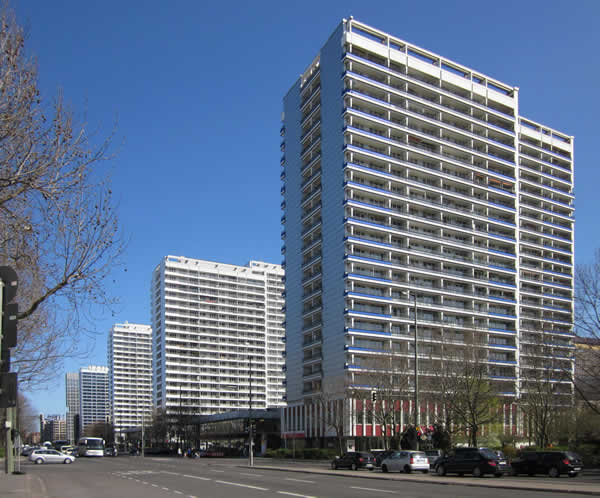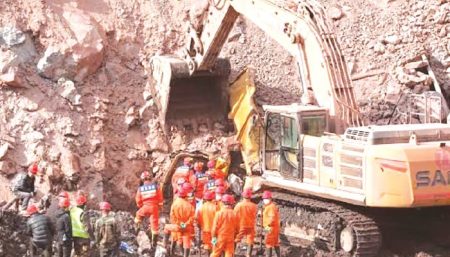The Vertical Solution: High-Rise Housing as a Sustainable Approach to Slum Upgrading and Urban Density
The increasing concentration of populations in urban centers worldwide has intensified the demand for housing, particularly in developing nations like Nigeria. Traditional approaches to housing development, focused on horizontal expansion, are becoming unsustainable due to land scarcity and urban sprawl. As a result, stakeholders are increasingly advocating for high-rise construction as a solution to maximize land use, address housing deficits, and upgrade informal settlements without displacing residents. This approach promises efficient land utilization, improved infrastructure, and economic upliftment through formalization and mixed-use development. However, it requires careful planning, community engagement, and robust policy frameworks to mitigate potential risks associated with displacement, affordability, social disruption, and long-term maintenance.
A central challenge in addressing the housing crisis, particularly in rapidly growing urban centers, is the inefficient use of land. As cities expand, land becomes increasingly scarce and expensive, pushing development further outwards and exacerbating urban sprawl. This outward expansion strains infrastructure, increases commute times, and intensifies environmental pressures. High-rise construction offers a viable alternative by maximizing the utilization of limited urban land. By building upwards, cities can accommodate growing populations within existing boundaries,reducing the need for outward expansion and minimizing its associated negative consequences. This approach requires a shift in urban planning paradigms, prioritizing vertical density over horizontal sprawl.
The success of high-rise housing initiatives hinges on careful consideration of affordability and sustainability. Simply building taller structures without addressing the economic realities of low- and middle-income households will only exacerbate existing inequalities. Developers must be incentivized to build housing units that are accessible to a wide range of income levels. This can be achieved through government subsidies, tax breaks, and other financial incentives. Furthermore, these high-rise developments should be strategically located within communities with access to essential services such as schools, hospitals, and public transportation, ensuring that residents have access to the resources they need to thrive. Integrating these considerations into the planning process will ensure that high-rise developments contribute to the overall well-being of residents and the broader community.
Drawing inspiration from successful models of high-rise housing implemented in various countries offers valuable insights. Singapore, for instance, has demonstrated the effectiveness of state-led planning and subsidized ownership in providing affordable, high-quality homes. Brazil has successfully combined vertical housing with social development goals. Closer to Nigeria, Ethiopia has showcased the feasibility of using local materials, public land, and state coordination to provide vertical housing solutions for low-income populations. These examples underscore the importance of government involvement, supportive financial institutions, and a comprehensive approach that considers the social and economic needs of residents.
Implementing successful high-rise housing projects requires a multi-pronged approach that addresses financial accessibility, community engagement, and data-driven decision-making. Expanding mortgage access, reducing interest rates, and developing alternative financing models, such as cooperative housing schemes or rent-to-own structures, are crucial to ensuring that high-rise housing is truly accessible to a wide range of income levels. Public-private partnerships can play a significant role in upgrading slum conditions by providing safer, better-serviced, and more dignified vertical housing, while also minimizing displacement. Data, specifically geospatial and demographic data, can be instrumental in identifying areas of greatest need, ensuring that high-rise housing projects are strategically located in areas where they will have the greatest impact. Income and employment data can further inform the development of housing models that are financially sustainable for intended residents.
Community participation is essential throughout the entire process, from planning and design to construction and management. Engaging residents in the decision-making process ensures that their needs and concerns are addressed, fostering a sense of ownership and promoting long-term sustainability. Maintenance plans, developed in consultation with residents, are crucial for ensuring the longevity and functionality of high-rise buildings. By integrating data-driven decision-making, community participation, and comprehensive maintenance strategies, high-rise housing projects can effectively address the housing needs of growing urban populations while simultaneously upgrading informal settlements and promoting sustainable urban development. This approach requires a holistic perspective that considers not just the physical structures, but also the social and economic well-being of the communities they serve.














